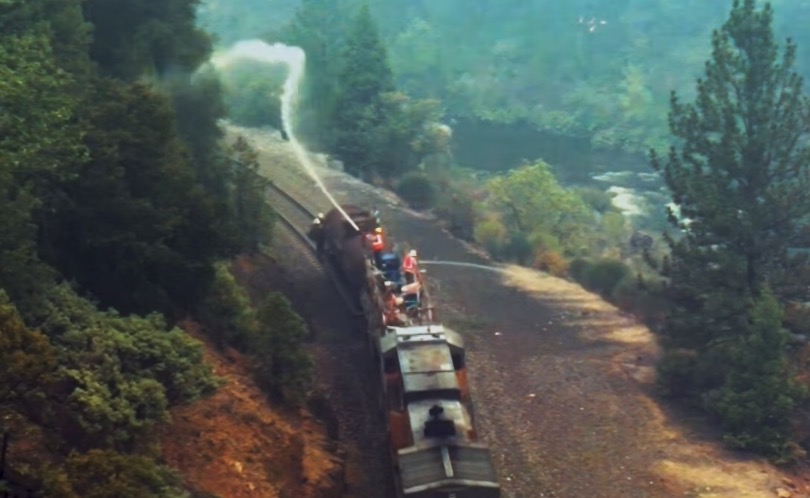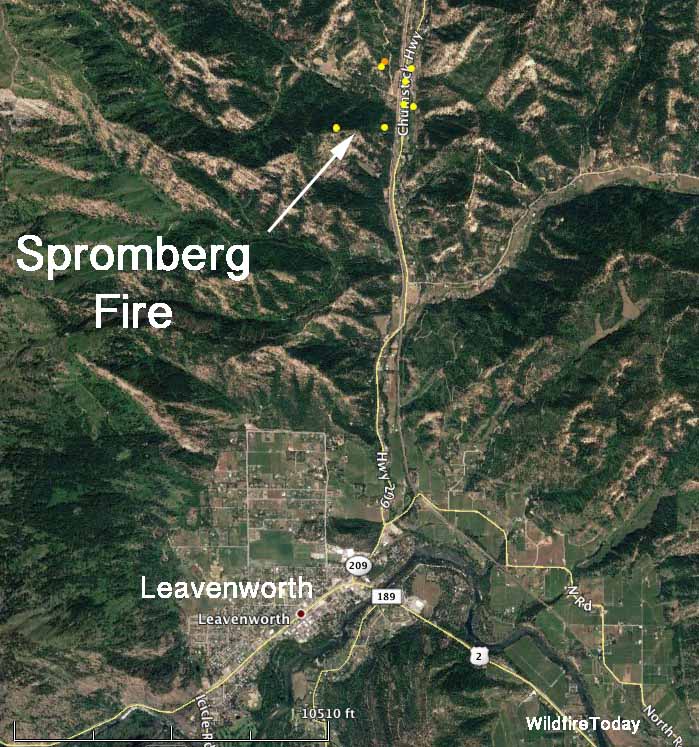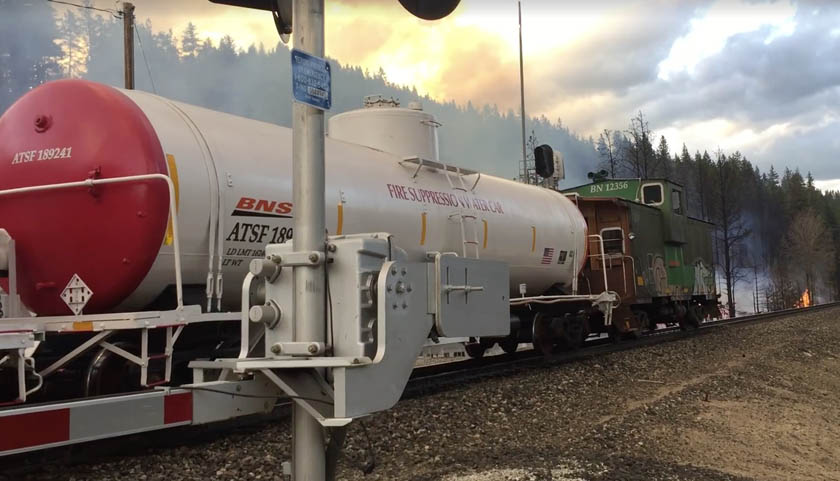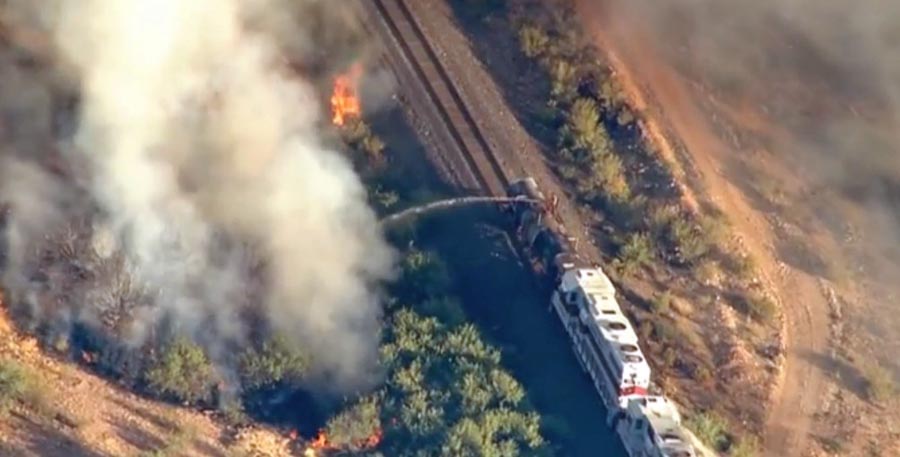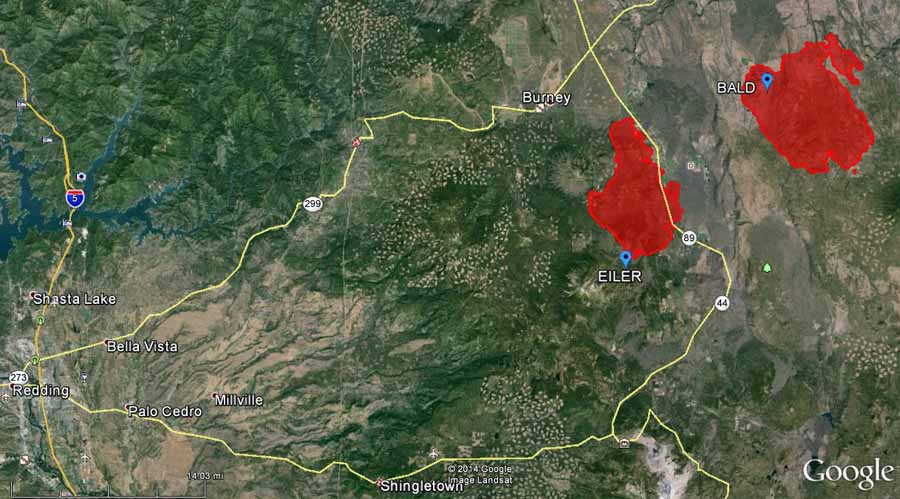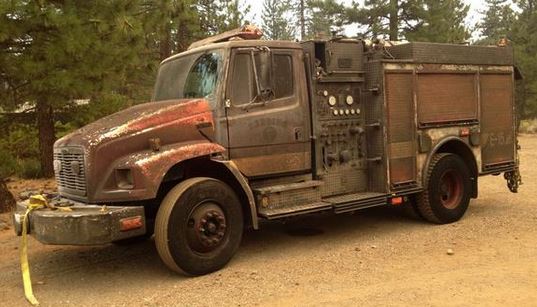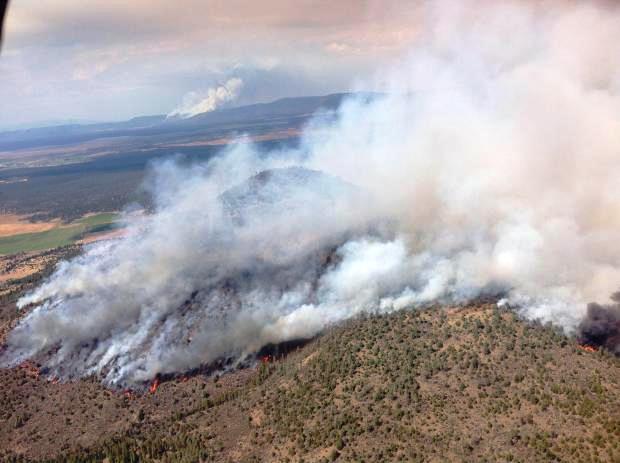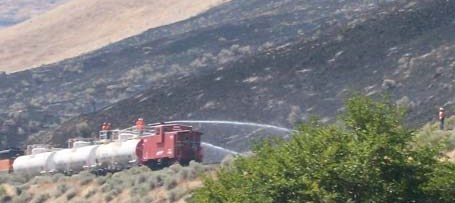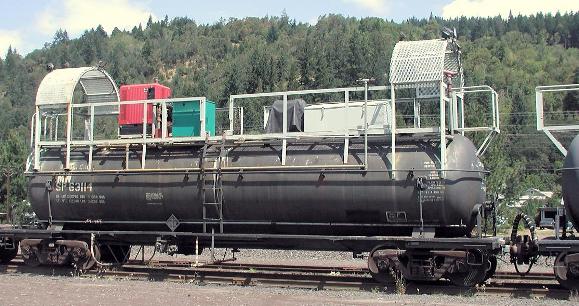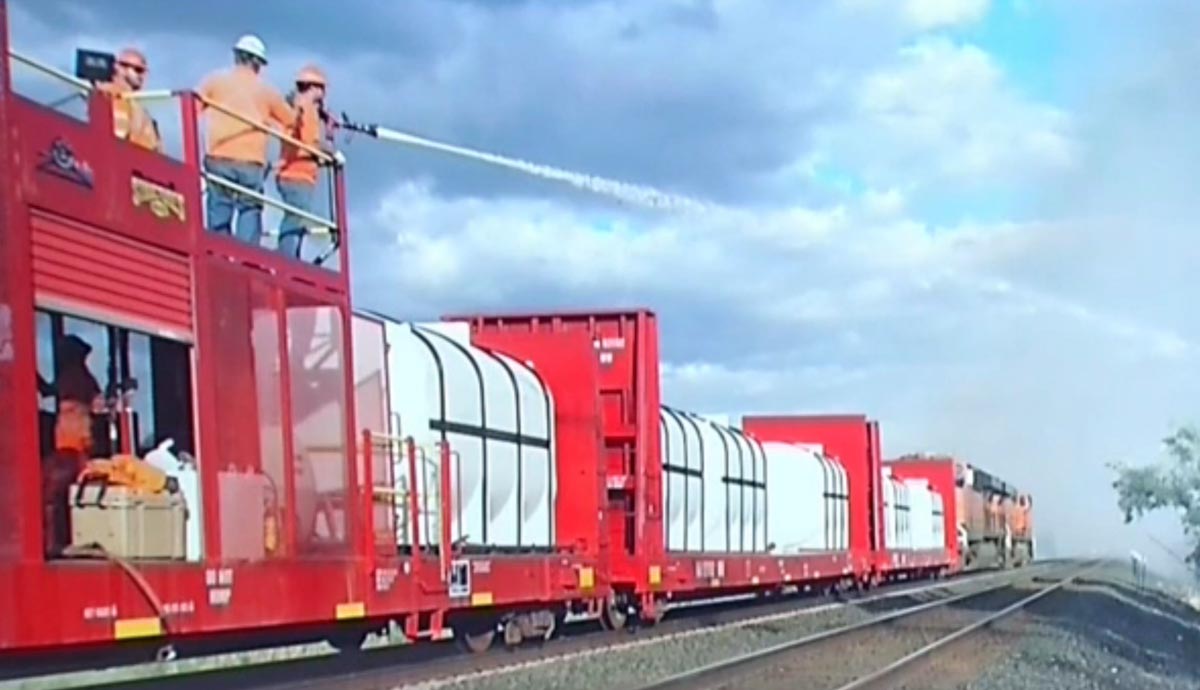
On Thursday a fire train that probably carried nearly 30,000 gallons of water assisted firefighters battling a wildfire along railroad tracks south of Finely, Washington.
Here is a video from KEPR in which a reporter interviews firefighters to get their reaction to this train.
(If the embedded video above does not load, you can view it at the KEPR website.)
Burlington Northern Santa Fe railway has built a number of these firefighting trains.
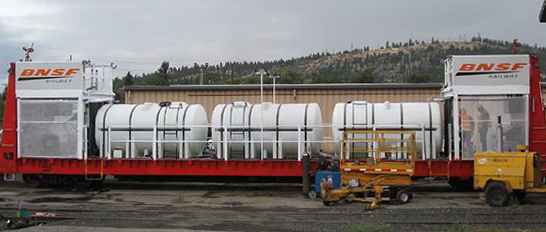
Below is an excerpt from an article at Railway Age about the BNSF fire trains:
…The Spokane fire train utilizes bulkhead flatcars that have been converted to carry three to four modular tanks, each carrying roughly 3,250 gallons of water. Swiveling water/foam cannons are mounted on elevated platforms at both ends of the train’s center car, which also carries a 500-gallon tank of aqueous firefighting foam. BNSF says, “We can reach about 300 feet up an embankment.” The train also includes a caboose that serves as a shelter and command center and houses a generator to power lights for nighttime firefighting.
BNSF built a second fire train in 2008 in Vancouver, Wash., with a different design approach. Stationed along the Columbia River at Wishram, Wash., it uses highly modified tank cars with generators and pump systems housed underneath and swivel cannons mounted on top, plus a command center caboose that’s outfitted with a spray bar that can soak wooden ties or bridges while the train is in motion. Since fire train crews often work jointly with local responders, hoses and couplings on the BNSF railcars are made compatible with fire trucks and other equipment. The cars also have siphons, which allow them to be refilled from storage tanks or natural water sources near the right-of-way…
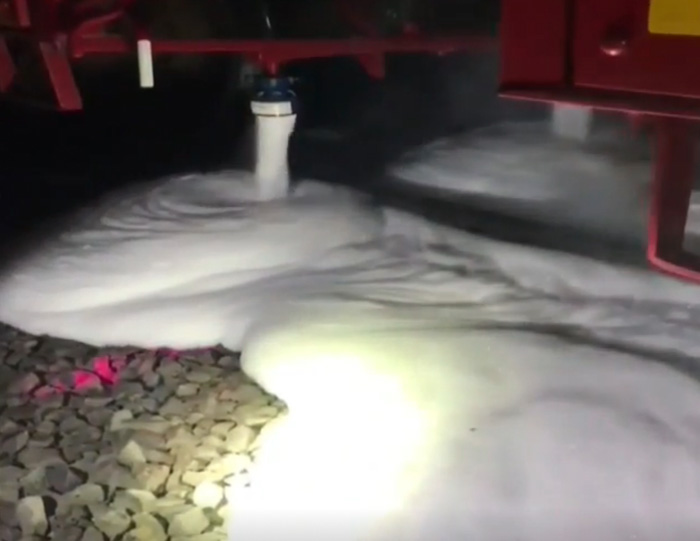
We have written about fire trains several times before on Wildfire Today.

